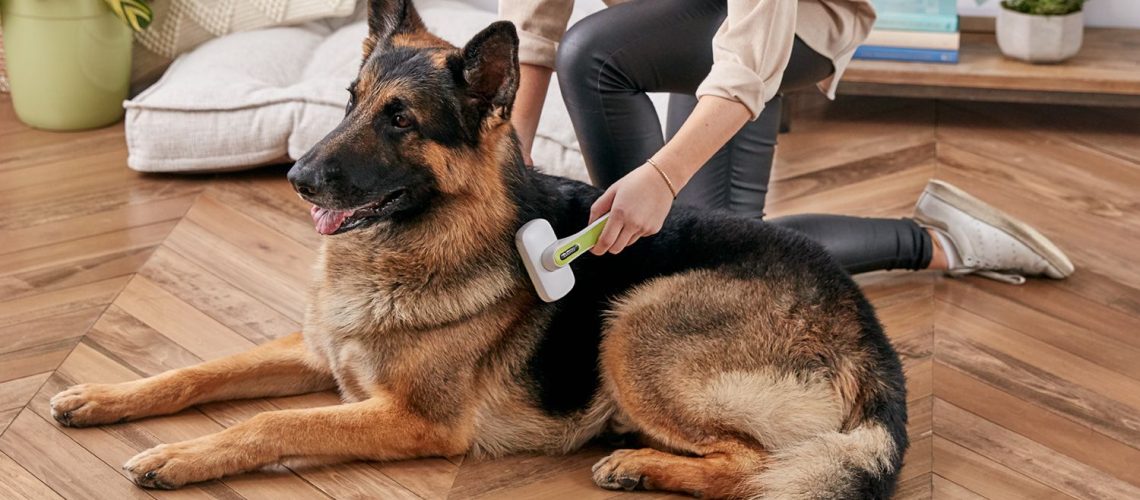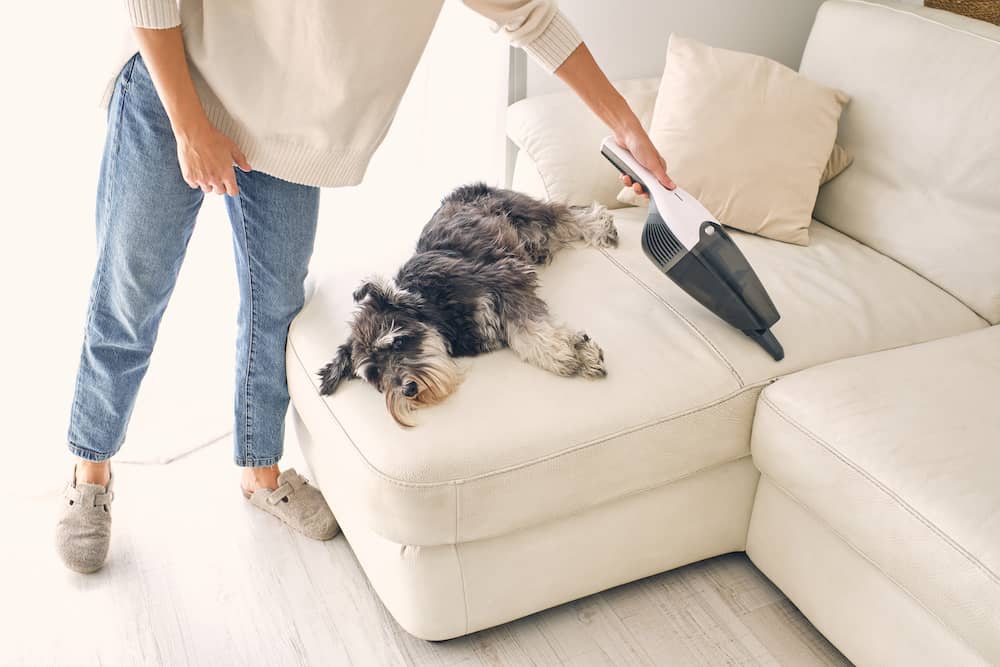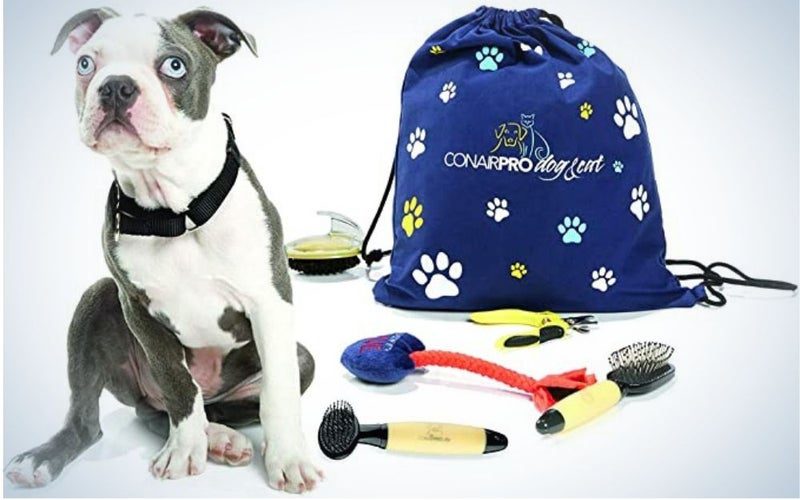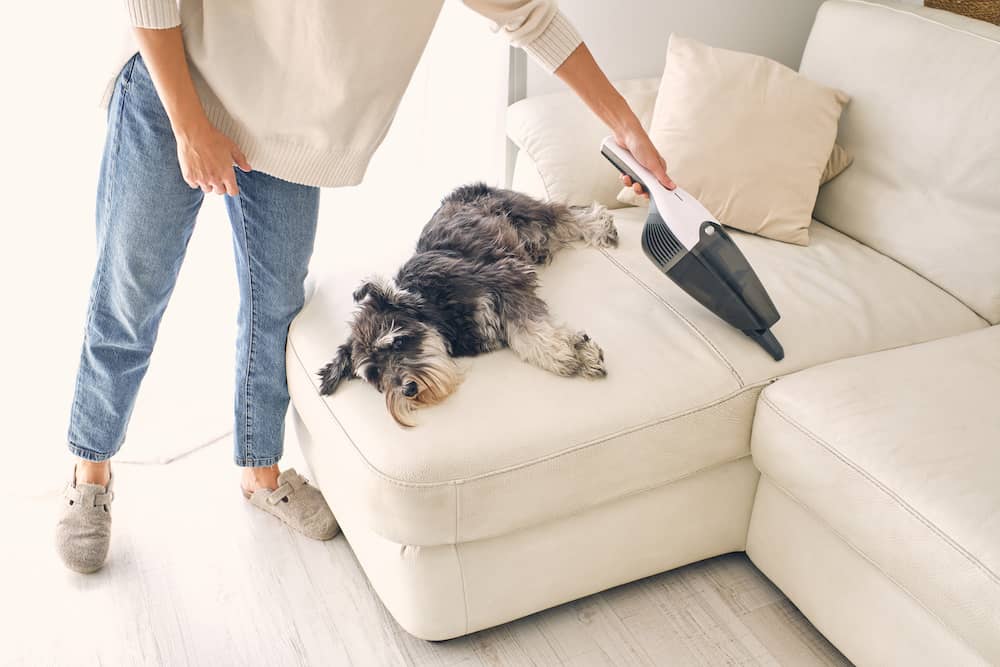If you're struggling to manage your dog's shedding, we've got you covered. Discover effective strategies and tips for dealing with a shedding dog to keep your home clean and your furry friend happy.
Key Takeaways:
-
- Regular grooming and brushing can help control shedding in dogs.
- A healthy diet and proper nutrition can minimize excessive shedding.
- Vacuuming and regular cleaning of the house can help manage dog hair.
- Using a deshedding tool or brush specifically designed for your dog's breed can be effective in reducing shedding.
- Consulting with a veterinarian can help identify any underlying health issues causing excessive shedding.
Why do dogs shed their fur?
Dogs shed their fur as a natural process to get rid of old or damaged hair. Shedding helps them maintain a healthy coat and regulate their body temperature. It is a normal part of a dog's life cycle, just like humans shedding skin cells.
There are several factors that contribute to the amount of shedding in dogs. One factor is the breed of the dog. Some breeds, like Labrador Retrievers and German Shepherds, have double coats that shed more than breeds with single coats, such as Poodles or Bichon Frises.
Another factor is the time of year. Dogs often shed more in the spring and fall as they transition between their winter and summer coats. This shedding phase is known as "blowing coat." During this time, it is common to see clumps of fur coming out when you brush or pet your dog.
Hormonal changes
Hormonal changes can also affect a dog's shedding patterns. Female dogs may shed more after giving birth or during heat cycles. Male dogs may experience increased shedding if they are not neutered.
Stress and health issues
Stress and certain health issues can also cause excessive shedding in dogs. Stressful events like moving to a new home or the addition of a new family member can trigger increased shedding. Health conditions such as allergies, skin infections, or hormonal imbalances can also lead to excessive shedding.
In conclusion, shedding is a natural process for dogs that helps them maintain a healthy coat and regulate their body temperature. Factors such as breed, season, hormonal changes, stress, and health issues can all influence the amount of shedding in dogs.
Common reasons why dogs shed more than usual
Dogs naturally shed their fur as part of their regular hair growth cycle. However, there are certain factors that can cause a dog to shed more than usual. One common reason is seasonal shedding, also known as "blowing coat," which occurs when dogs shed their winter coat in preparation for warmer weather. Another reason for excessive shedding is stress or anxiety, which can disrupt the normal hair growth cycle. Additionally, certain medical conditions such as allergies or hormonal imbalances can lead to increased shedding in dogs.
Seasonal Shedding:
Seasonal shedding typically occurs during spring and fall when dogs transition between their winter and summer coats. This shedding process helps them adapt to changing temperatures.
Stress or Anxiety:
Dogs may experience increased shedding when they are stressed or anxious. This can be due to changes in their environment, separation anxiety, or other emotional factors.
Allergies and Hormonal Imbalances:
Allergies and hormonal imbalances can disrupt the normal hair growth cycle in dogs, leading to excessive shedding. It's important to consult with a veterinarian if you suspect these underlying causes.
How often should you groom a shedding dog?
Grooming plays a crucial role in managing a shedding dog's fur. The frequency of grooming depends on the breed and individual needs of the dog. Generally, it is recommended to brush a shedding dog at least once or twice a week to remove loose fur and prevent matting. However, during peak shedding seasons, such as spring and fall, more frequent brushing may be necessary.
Breed-Specific Grooming Needs:
Different breeds have different grooming requirements. Some breeds with long or dense coats may require daily brushing to prevent matting and excessive shedding. On the other hand, short-haired breeds may need less frequent grooming.
Regular Brushing:
Regular brushing helps remove loose fur before it ends up on your furniture or clothes. It also stimulates the production of natural oils in the dog's skin, promoting a healthy coat and reducing shedding.
Professional Grooming:
In addition to regular brushing, scheduling regular visits to a professional groomer can help keep a shedding dog's coat in good condition. Groomers have specialized tools and techniques to effectively manage shedding and maintain the overall health of the dog's coat.
Tools and brushes to manage a shedding dog's fur
To effectively manage a shedding dog's fur, there are various tools and brushes available that can help remove loose hair and minimize shedding. The choice of tools depends on the type of coat your dog has.
Slicker Brush:
A slicker brush is ideal for dogs with medium to long hair. It has fine, short wires close together that can penetrate through the topcoat and remove loose hair without causing discomfort to the dog.
Bristle Brush:
Bristle brushes are suitable for dogs with short coats or those with sensitive skin. They have soft bristles that help distribute natural oils throughout the coat while removing loose hair.
Undercoat Rake:
Dogs with double coats, such as Huskies or Golden Retrievers, often have a dense undercoat that sheds heavily. An undercoat rake is designed to reach deep into this undercoat and remove loose hair effectively.
Note:
It is important to choose brushes and tools that are appropriate for your dog's coat type to avoid causing any discomfort or damage to their skin.
Effective ways to minimize shedding in dogs
While it is impossible to completely stop a dog from shedding, there are several effective ways to minimize shedding and keep your home cleaner.
Regular Brushing:
As mentioned earlier, regular brushing is essential for managing shedding. It helps remove loose hair before it ends up on your furniture or clothes. Aim to brush your dog at least once or twice a week, or more frequently during peak shedding seasons.
Healthy Diet:
Providing your dog with a balanced and nutritious diet can help improve the health of their skin and coat. Omega-3 fatty acids found in fish oil supplements can also promote a healthy coat and reduce excessive shedding.
Avoid Stressful Environments:
Dogs can shed more when they are stressed or anxious. Creating a calm and stress-free environment for your dog can help minimize shedding caused by emotional factors.
Note:
If you notice sudden or excessive shedding in your dog, it is important to consult with a veterinarian to rule out any underlying medical conditions that may be causing the increased shedding.
Can diet and nutrition affect a dog's shedding patterns?
Absolutely! Diet and nutrition play a significant role in a dog's overall health, including the condition of their skin and coat. A poor diet lacking essential nutrients can lead to dry skin, dull coat, and increased shedding. On the other hand, providing a balanced and nutritious diet can help improve the health of your dog's skin and reduce excessive shedding.
Nutrients for Healthy Skin and Coat:
Essential nutrients such as omega-3 fatty acids, vitamins A and E, and biotin are crucial for maintaining a healthy skin barrier and promoting a shiny coat. These nutrients can be found in high-quality dog food or through supplements recommended by your veterinarian.
Hydration:
Proper hydration is also important for maintaining healthy skin and coat. Make sure your dog has access to fresh water at all times to prevent dehydration, which can contribute to dry skin and increased shedding.
Note:
It is always best to consult with a veterinarian before making any significant changes to your dog's diet or introducing new supplements to ensure they are appropriate for your dog's specific needs.
Medical conditions that cause excessive shedding in dogs
Excessive shedding in dogs can sometimes be a symptom of an underlying medical condition. If you notice sudden or severe shedding in your dog, it is important to consult with a veterinarian to rule out any potential health issues.
Allergies:
Allergies, whether food allergies or environmental allergies, can cause excessive shedding in dogs. Common allergens include certain ingredients in their diet, pollen, dust mites, or fleas. Identifying and managing the underlying allergy can help reduce shedding.
Hormonal Imbalances:
Hormonal imbalances such as hypothyroidism or Cushing's disease can disrupt the normal hair growth cycle and lead to excessive shedding. Blood tests can help diagnose these conditions, and appropriate treatment can help manage the shedding.
Skin Infections:
Skin infections caused by bacteria or fungi can cause itching, inflammation, and hair loss in dogs. Treating the underlying infection is essential to resolve the excessive shedding.
Note:
If you suspect that a medical condition is causing your dog's excessive shedding, it is important to seek veterinary advice for proper diagnosis and treatment.
How regular bathing helps control shedding in dogs
Regular bathing is an essential part of maintaining a healthy coat and controlling shedding in dogs. Bathing helps remove loose hair, dirt, and debris from the coat, preventing them from ending up on your furniture or clothes.
Bathing Frequency:
The frequency of bathing depends on your dog's breed, activity level, and individual needs. Generally, most dogs benefit from a bath every 4-6 weeks. However, some breeds with oily skin or skin conditions may require more frequent baths as recommended by a veterinarian.
Use Appropriate Shampoo:
It is important to use a shampoo specifically formulated for dogs. Human shampoos can be too harsh for their sensitive skin and may cause dryness or irritation. Choose a shampoo that addresses any specific skin or coat issues your dog may have.
Thorough Rinse:
Make sure to rinse your dog thoroughly after shampooing to remove all traces of soap. Residual soap can irritate the skin and contribute to excessive shedding.
Note:
While regular bathing is beneficial for controlling shedding, over-bathing can strip the natural oils from your dog's skin and cause dryness. Find the right balance based on your dog's needs and consult with a veterinarian if you have any concerns.
Home remedies and natural solutions to reduce shedding in dogs
In addition to regular grooming practices, there are some home remedies and natural solutions that may help reduce shedding in dogs.
Fatty Acid Supplements:
Omega-3 fatty acid supplements, such as fish oil, can help improve the health of your dog's skin and coat. These supplements have anti-inflammatory properties and can reduce shedding caused by allergies or dry skin.
Regular Bathing:
As mentioned earlier, regular bathing helps remove loose hair and prevent it from ending up on your furniture. Use a gentle shampoo formulated for dogs to avoid drying out their skin.
Dietary Changes:
Adding certain foods to your dog's diet, such as eggs or flaxseed, which are rich in omega-3 fatty acids, can promote a healthy coat and reduce shedding. However, it is important to consult with a veterinarian before making any significant dietary changes.
Note:
While these home remedies may help reduce shedding to some extent, it is important to remember that every dog is different. If you have concerns about excessive shedding or if home remedies do not seem to be effective, consult with a veterinarian for proper diagnosis and guidance.
| In conclusion: | |
| 1. | Regular grooming and brushing are essential to manage shedding in dogs. It helps remove loose hair and keeps their coat healthy. |
| 2. | A balanced diet rich in omega-3 fatty acids can improve your dog's skin health, reducing excessive shedding. |
| 3. | Vacuuming frequently, using lint rollers, and washing bedding regularly can help keep your home clean from dog hair. |

















